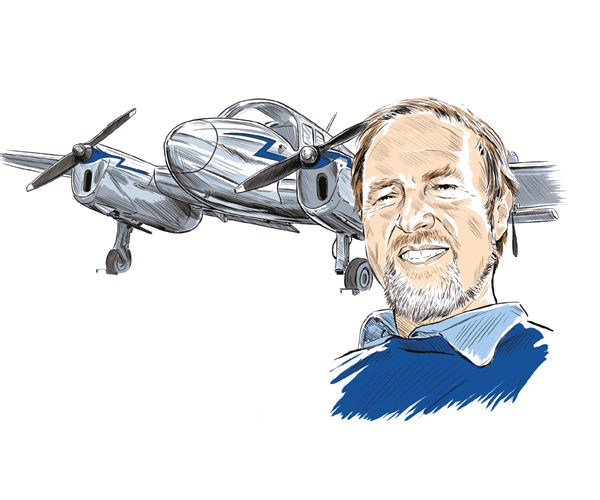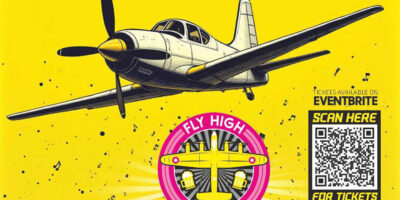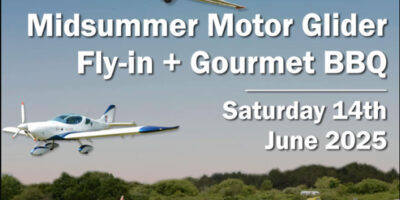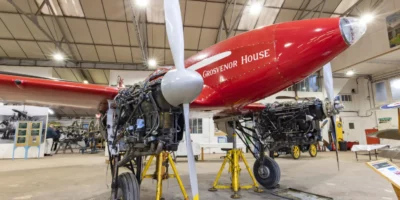A good mate has recently started a new enterprise entitled The Great British Car Journey, a simple piece of genius which celebrates the ordinary cars our parents – and grandparents – owned and cherished. His museum, housed in a long hall once home to a rope factory, celebrates the lives and fortunes of the UK’s great automotive pioneers – Herbert Austin, William Morris, William and Reginald Rootes – all surrounded by examples of their less glamorous products. And if you thought that was easy to arrange, there are for instance, only four 1.2 litre Vauxhall Chevettes still registered with DVLA. They and their counterparts represented utility and once they had lost their initial lustre, they rotted away pretty quickly. Richard’s idea is more than just a museum though. ‘Drive dad’s car…’ means you can drive an Austin Seven, a Hillman Imp or a Morris Minor, and many others.
“It’s that immediate sense of the past that makes ‘Old Aeroplanes’ extra special”
It’s a great idea, but the experience can’t be exactly the same as it was because roads have changed and traffic travels so much faster. And if you got the chance to live with ‘dad’s car’ for a few days rather than drive it round a small track, you’d wonder why the wipers were so rubbish, not to mention the heating, demisting, absence of aircon, lack of brakes, and whining axles.
Industrial progress has resolved so much in our everyday transport, and that is before we even get to remote central locking and Bluetooth connections… Looking at all the stuff on an ordinary modern car, we should wonder how they are so cheap.
Yet aeroplanes in general, and ‘The Light Aeroplane’ in particular, have not benefitted from a similar level of development. So even if the certified ones that most of us fly date from the same era as much of Richard’s collection, they seem perfectly normal today. You probably wouldn’t use a Morris Minor as daily transport but there would be no problem with a Cessna of similar age, provided it had a decent radio… Perhaps more importantly, the air hasn’t changed like the roads. Busier and increasingly regulated, but there are still large swathes where from 1,500ft, it looks much as it did when the aircraft was made.
It’s the immediate sense of the past that makes ‘Old Aeroplanes’ extra special. The cockpit of my Messenger is much like it was in the 1940s, but it still rides the air exactly like it did. The feel of the controls is the same, the in-line clatter from the Blackburn’s exhaust just below my feet is still as loud. I’m transported body and soul, back to 1946… All of this is made real by the log books which are such an important part of an aircraft’s maintenance, but which also say where it’s been and who was at the controls. The yellowing pages of Civil Aviation form 26 – otherwise known as a Journey Log Book – shows an entry by Arthur Linnell, the Messenger’s first owner, leaving Sywell on July 12 1947 with two passengers, bound first for Lympne, presumably to clear customs, landing at 1125. They left at 1155 and reached Deauville at 1330. Then, two days later they flew to Le Touquet, then to Zoutelaand in Holland, which appears later as a regular destination, every landing with a Customs stamp and signature. None of this very interesting per se, but fascinating as a part of the aeroplane’s life. Who knows why they went or for what, but it was in my aeroplane.
Messenger is nothing if not well-travelled. There was almost a daily trip to France in the 1950s, then further afield to Munich and Cologne, and of course the beach landing to give rides at Skegness for which I have a photograph. That looks distinctly local though, compared with the log for the Fairchild Argus/Forwarder which I found some years ago, hanging from the roof in Midden Zeeland. It had started life as a lend-lease aircraft and had flown the hour and a half’s acceptance flight, but then nothing further until it was shipped back to the Fairchild factory where for some reason it was given a new Fairchild Ranger engine, then in 1946, dismantled and crated, shipped to Cairo and reassembled, wearing the South African registration ZS-BAY. A ‘Mrs Forward’ (appropriate name) then flew the 5,000-plus miles single-handed, to Johannesburg. Some of the places recorded in the yellowing pages you couldn’t visit now, but even if the politics were less of a problem then, there must have been challenges of a different kind. Khartoum to Nairobi to Dar-es-Salaam… How did she plan, how did she navigate? How did she know there would be fuel? Some of the legs were six or eight hours, so goodness knows what size of ferry tank she had or more to the point, how did she keep a Ranger 6-440 in oil for that long? That is one of the type’s little foibles which it took some time to make only slightly better.
But I also know that then as now, the Fairchild would have been a friendly companion for Mrs Forward and if she’d had to put it down, then it would have floated on like some giant Stork settling on long stalky legs designed to cope with the roughest of fields. And 50 years on, I was able to sit where she sat, looking at the same knobs and switches, feeling the same controls, which like the Messenger, are linked by rods and bellcranks rather than cables and pulleys. You can’t put a price on any of that.
Working vintage aircraft and cars make Mark particularly happy.
[email protected]







